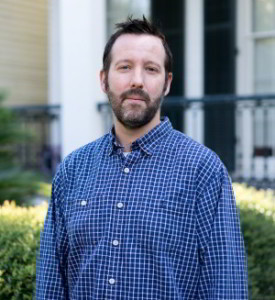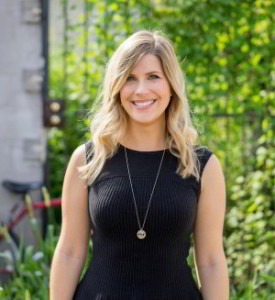Last week, tens of thousands of techies descended upon New Orleans for the Collision conference. The three-day event was a mash-up of marketing leaders, start-ups, and all-around creative, intelligent folks.
FSC Interactive was there in force and we want to share a few takeaways:

McKenzie Lovelace
McKenzie Lovelace, Founder & CEO
Collision Marketing Stage had 23 presentations with 53 speakers and panelists and held my attention for more than 7 hours. Which is a feat – I get bored easily, and almost half of the time in seminars and conferences, I feel that content doesn’t relate to me – especially at a “tech” conference. Not at Collision. It was about storytelling, branding, and disruptive PR.
They gave examples of successful online advertising and how anyone can use content to improve their SEO, how to measure that success and how to make your mark – with big and small budgets. 15 minutes here and there on mobile marketing, cross channel marketing, and the qualitative and quantitative analysis – and a lot more. These were big brands, big companies, big names, and they were relating to everyone standing there wanting to learn more about how to make impact in their business.
Collision was literally the collision of big and small – pitch rounds, alpha start-ups, companies in betas and the more than 10,000 international attendees wanting to learn about what is new, how to be better, how to do more. And it worked. Beautifully. All right here in New Orleans.
I learned a lot and was validated even more as to our existing best practices – and this coming from people who I admire and am in awe of in their success and thought leadership. Proud of FSC, proud of New Orleans. Do we really have to wait another year?

Mike Crimmins
Mike Crimmins, Search Specialist
Where’s search going in 2017 and beyond? I had the pleasure of asking Rand Fishkin, and here’s what he had to say:
“I think we’re going to continue to see Google progressing on their mobile-first/desktop-second strategy, and that’s going to mean a bigger focus on faster, more direct answers (AMP and carousels and answer boxes have all gone in that direction). As far as marketers are concerned, paying attention to the opportunities and options Google provides will be crucial, as it always has been in SEO, but I also think Signal:Noise ratio is going to be playing a bigger and bigger role. It’s getting harder to provide truly unique value on the web — especially in content, since everyone’s getting into it — but Google is going to be looking for those signals that separate the wheat from the chaff.” — Rand Fishkin of Moz
I also took notes during several presentations, including John Hall’s. Here’s a portion of that:
To provide value to your customers and future customers, don’t just write articles about topics that interest you. Create a content bank of ideas filled with issues and objections that you encounter when working with clients, are recruiting new clients, etc. For example, the CFO that has valid objections. Write to that. — Paraphrased from John Hall of Influence & Co
Oh, and one more thing: “Buy vinyl.” — Stretch Armstrong
 Mallory Whitfield, Content Analyst
Mallory Whitfield, Content Analyst
Caroline Sinders’ “Designing for Consent” presentation explored the ways that platforms like Twitter currently allow users to manage how other users can interact with them as online harassment and cyber-bullying continue to rise. How can we use machine learning to identify and prevent intimidating behavior in a semi-anonymous setting, and how can we create a better range of privacy options to allow users to control their online environment?
For example, if Twitter offered privacy settings as specific as “don’t allow accounts with fewer than X amount of followers to tweet at me,” or, “don’t let accounts fewer than X amount of days old tweet at me,” many users could pro-actively block new accounts created solely for trolling purposes.

Sara Watson
Sara Watson, Editorial Manager
No matter what kind of content you’re producing, the bottom line seems to hit ideally two marks: Is it storytelling, and is it the truth?
One of my favorite panels was the joint discussion between an editor at The Onion and a co-creator of Upworthy. On the face of it, these publications seem in complete opposition with one another, but at their core they both seek storytelling and honing in on universal truths — and they’ve both been wildly successful.
Similarly, another takeaway for me was thinking about how to determine whether a certain piece of content is a success. Yes, there are relied-upon benchmarks (time on page, for example), but several editors and content producers at various panels mentioned sharing as a strong, valuable metric and indicator of content that resonates with an audience.
Tiffany StarnesTiffany Starnes, Vice President of Innovation
One of the greatest ideas I took away from Collision was: Don’t fall in love with your product. Products must evolve and change, and getting to attached to a certain way of doing things will hold you back from innovating. Reinvention by its nature implies that the old process isn’t working anymore, which can really hurt if you are the passionate person who invented the first process.
In online marketing, platforms and algorithms change daily and so must the approach to remain relevant. Stay true to to your mission and vision, but expect, even demand, that the products you create and services you offer will continuously change.
Did you attend Collision in New Orleans?
Reach out via Twitter and let us know your top takeaways.
